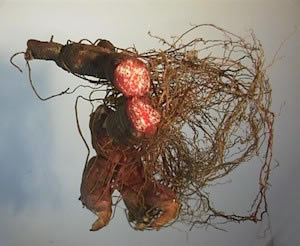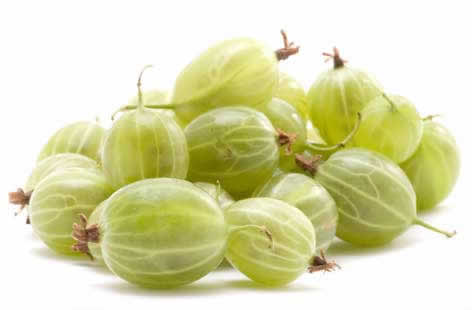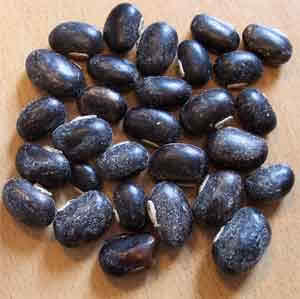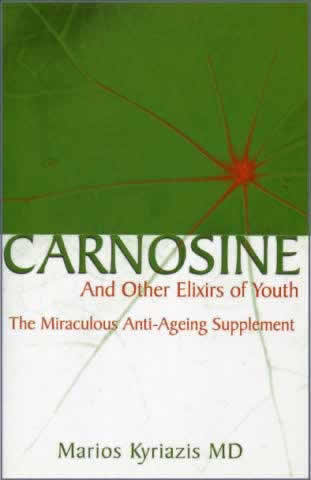Rooibos (Aspalathus linearis) is a broom-like member of the legume family of plants growing in SouthAfrican fynbos. “Rooibos” means literally red bush in Afrikaans. Tea, is made from the fermented needle-shaped leaves of the rooibos shrub. Rooibos tea goes through a fermentation process. During the fermentation of the leaves, some chemicals are oxidized by enzymes resulting in the typical red colour of rooibos. Two polyphenol antioxidants known as nothofagin and aspalathin are found in high levels in rooibos tea. Aspalathin constitutes approximately 1.5 %of dry Rooibos leaves. The tea is completely free from caffeine content and is low in tannin. Tannin has been said to decrease the iron in tea drinkers by about one third.
Rooibos Benefits
The main flavonoids in rooibos are dihydrochalcone aspalathin, chrysoeriol, nothofagin, luteolin, orientin, vitexin, isovitexin, quercetin and rutin. Rooibos is the only known source of antioxidant called aspalathin. Nothofagin and aspalathin, have more strongly anti-oxidative effect than other flavonoids. Different researches have shown that rooibos tea contain potent free radical scavengers and help to protect cells and important cellular components such as lipids, proteins and genetic material against oxidative damage. Rooibos tea promote the production of antibodies that may be important in the therapy of cancer, AIDS and other different ailments, according to a research reported in the October 2001 Bioscience, Biotechnology and Biochemistry.
Animal-based studies demonstrate it has strong antioxidant,immune-modulating and chemopreventive properties. Rooibos tea enhances the body’s ability to avoid the ailment by increasing detoxifying liver enzymes and arresting and slowing down, DNA mutation. The antioxidants in rooibos tea are strong enough to measurably elevate the antioxidant levels in blood. The effect peaks approximately 1 hour after drinking 500 ml tea. The study findings, reported in “Food Chemistry” in May 2010, demonstrated that 15 healthful adults given 500 ml of rooibos tea increased antioxidant capacity 6.6 %. Professor Gelderblom of the “PROMEC Unit of the Medical Research Counci” in Cape Town is conducting research on this herb. Rooibos has great promise as a source of anti-oxidants which in rats can induce a 400 percent enhance in the GSH/GSSG ratio which is certainly necessary for optimum health. Research has found that rooibos tea raised the ratio of reduced glutathione to oxidised glutathione by 100 percent in humans who consumed 6 cups a day over a period of 3 months. In wholesome cells, over 90 percent of glutathione is found in the reduced form, and less than 10 percent is oxidised. An increased level of oxidised glutathione is an indicator that toxic substances are harming the cells. In addition, Japanese researchers have found that rooibos includes a mimic of the enzyme SOD (Super Oxide Dismutase), an antioxidant which attacks the free radicals and limits their damaging effects.
 In a study, Heidelberg University researchers showed that rooibos has the ability to promote longevity in living organisms. Using roundworms as a model, they produced evidence that rooibos tea reduced oxidative damage in their cells. Researchers were able to show that aspalathin played a important role in their survival rate by targeting stress and ageing related genes.
In a study, Heidelberg University researchers showed that rooibos has the ability to promote longevity in living organisms. Using roundworms as a model, they produced evidence that rooibos tea reduced oxidative damage in their cells. Researchers were able to show that aspalathin played a important role in their survival rate by targeting stress and ageing related genes.
In 2011, researchers performed a study to test the activities of rooibos tea on different biological markers considered to be indicative of risk for cardiovascular and other degenerative ailments. A high use of rooibos resulted in pronounced reductions in lipid peroxidation, low density lipoprotein (LDL) cholesterol, triglycerides, and an increase in high-density lipoprotein (HDL) cholesterol levels compared with the control group. A study performed in healthy people demonstrated that rooibos tea inhibits the ACE (angiotensin converting enzyme), which may have cardiovascular properties. ACE is believed to be related in the development of cardiovascular disease, and thus angiotensin converting enzyme inhibitors are used to treat hypertension and heart illness. According to a article in the “Journal of Pharmacological Science“; chrysoeriol, can avoid and treat vascular disease by inhibiting the migration of smooth muscle cells inside the aorta, a important cause the narrowing or hardening of the arteries that may lead to a heart attack. A 2008 study performed by Dr. Jeanine Marnewick at the “Cape Peninsula University of Technology” (CPUT), demonstrated that 6 cups of Rooibos tea per day holds positive effects, and particularly helps to minimize oxidative stress in the body and lower the risk of heart disease.
An important study has been done with mice models proving the capability of Aspalathus linearis to delay the development of skin cancer lesions, decrease pre-cancerous lesions in the liver and inhibit the development of papillomas in the oesophagus. Topically applied this plant elicits a protective activity against microsomal lipid peroxidation and may help decrease chemical-induced tumor formation. In a 2009 study showed that topical application of polyphenol-rich extract of rooibos prior to UVB exposed skin inhibited the formation of tumours. Animal-based study reported in “Mutation Research” found that rooibos inhibited premalignant changes in the tissue-cultured mouse cells that were exposed to X-rays. The inhibiting action took place when cells were treated with as 2 % rooibos solution and peaked when cells were treated with 10 % solution. South African researchers from the Medical Research Council’s PROMEC Unit and the Oxidative Stress Research Centre at the Cape Peninsula University of Technology have found that rooibos could help avoid skin cancer. Dr Marnewick, who is a scientist in the MRC’s PROMEC research unit, obtained impressive findings with a skin cancer study. Dr Jeanine Marnewick and her team, investigated the effect of rooibos and honeybush extracts on UV-induced skin tumours in mice. The study found that green rooibos shrunk the dimension of the tumours by 91 percent and fermented rooibos by 97 percent. The finding for the green honeybush was 91 percent, and 95 percent for fermented honeybush. It found that unfermented rooibos decreased the number of tumours per mouse by 75 percent and fermented rooibos by 91 percent. The results for honeybush were 86 percent and 64 percent. Researchers concluded that polyphenol-rich extracts from rooibos have antitumour and photoprotective effects.
Dr Jeanine Marnewick says that rooibos tea protects against cancer in diverse ways. 1) Rooibos tea decreases cancer-associated changes in cells by protecting them against DNA damage or mutagenesis. 2) Rooibos may avoid a cell with damaged DNA from becoming a cancerous cell. 3) Rooibos tea may prevent cancerous cells from multiplying into masses and creating cancerous tumors. 4) Rooibos enhances the level of natural anti-oxidants in the liver, which means that the liver’s anti-oxidant status is developed. 5) Rooibos tea helps the liver to get rid of compounds that can cause cancer.
In a study, we analyzed the activity of Aspalathus linearis tea extract on antigen-specific antibody production and cytokine generation in vitro and in vivo. The results of suggested that rooibos extract may facilitate the antigen-specific antibody production through selective augmentation of IL-2 generation in vitro and in vivo.
The alkaline extract of rooibos leaves appear to suppress HIV-induced cytopathicity. Rooibos tea has been shown to have an favorable effect on the human immunodeficiency virus in 2 different study performed in Japan in 1997. The researches focused on the effects of polysaccharides. These are substances found in rooibos tea that have effect in preventing the HIV from binding to T cells. The polysaccharide amalgams available in rooibos tea prevents the HIV from sticking to its intended or target cells in the body. Dutch scientists has showed, that Rooibos has strong antiviral effect against rotaviruses that cause serious infections. The researchers investigated 150 extracts with known to test its activity on rotaviruses. They found 11 extracts able to inhibit rotavirus, but just 3, including rooibos tea, were found to have powerful and important antiviral effect.
Scientists from “Stellenbosch University” have discovered that rooibos tea includes compounds that can help to reduce stress and anxiety. According to research, there are a number of compounds (aspalathin and nothofagin) present in rooibos tea that interfere with the production of the stress hormone called cortisol. Researchers found that rooibos tea alleviate the production of cortisol in the cells. The research results were reported in “The Journal of Steroid Biochemistry and Molecular Biology”.
Rooibos includes anti-spasmodic substances which can relieve stomach pains. Rooibos tea is useful in treating stomach cramps thanks to the calming effect of the flavonoids on the digestive system. The flavonoid chrysoeriol seems to be primary responsible for the antispasmodic activity. Rooibos has been shown to inhibit in vitro activity of xanthine oxidase (XO). Xanthine oxidase plays a role in conversion of purine to uric acid in humans and reducing the effect of Xanthine oxidase could limit uric acid production, which would aid in therapy of gout.
 Bloodroot was included in the United States Pharmacopoeia from 1820 to 1926 as an botanical medication. The important component of bloodroot is sanguinarine, an alkaloid that indicates anticancer, antiangiogenic, anti-inflammatory, antimicrobial, anti-fungal, antimicrotubule and anesthetic effects.
Bloodroot was included in the United States Pharmacopoeia from 1820 to 1926 as an botanical medication. The important component of bloodroot is sanguinarine, an alkaloid that indicates anticancer, antiangiogenic, anti-inflammatory, antimicrobial, anti-fungal, antimicrotubule and anesthetic effects.  Anthocyanins may help prevent cardiovascular disorders, inflammatory responses, cancer, and degenerative diseases.
Anthocyanins may help prevent cardiovascular disorders, inflammatory responses, cancer, and degenerative diseases.  M. pruriens possesses significantly higher antiparkinson effect compared with levodopa (
M. pruriens possesses significantly higher antiparkinson effect compared with levodopa ( L-carnosine is an antioxidant which stabilizes and protects the cell membrane. Found in elevated concentrations in muscles and brain tissue, carnosine is backed by studies to support its capability to scavenge reactive oxygen species, which can lead to free radical damage. Carnosine has been shown to scavenge reactive oxygen species, as well as alpha-beta unsaturated aldehydes formed from peroxidation of cell membrane fatty acids during oxidative stress.
L-carnosine is an antioxidant which stabilizes and protects the cell membrane. Found in elevated concentrations in muscles and brain tissue, carnosine is backed by studies to support its capability to scavenge reactive oxygen species, which can lead to free radical damage. Carnosine has been shown to scavenge reactive oxygen species, as well as alpha-beta unsaturated aldehydes formed from peroxidation of cell membrane fatty acids during oxidative stress.